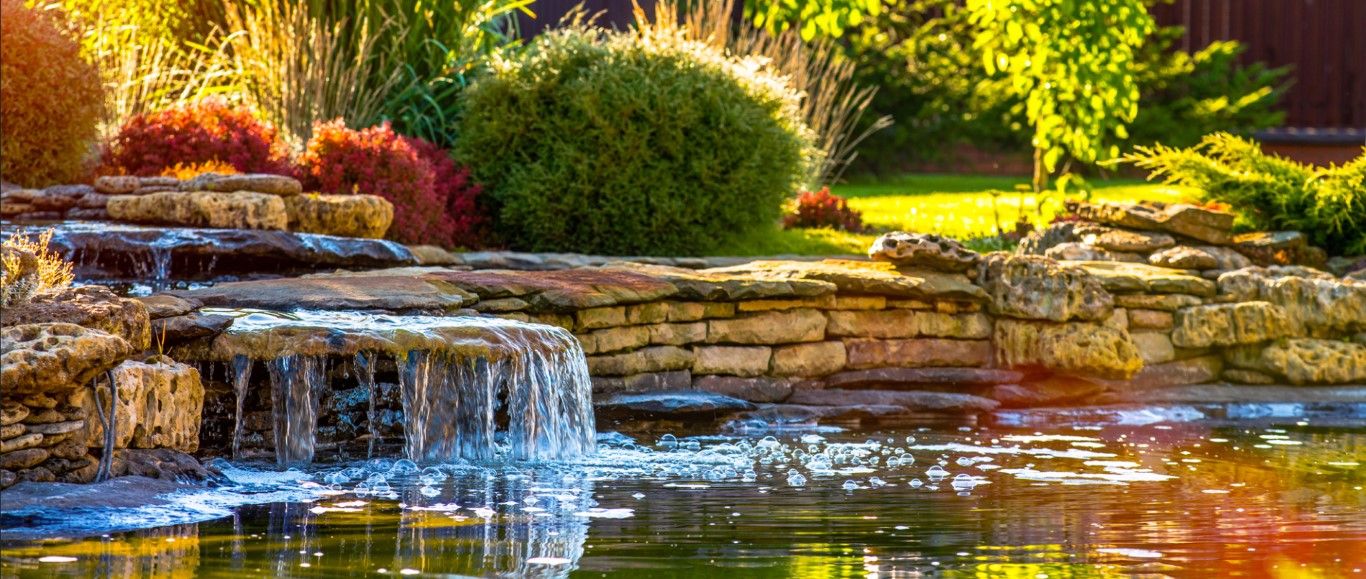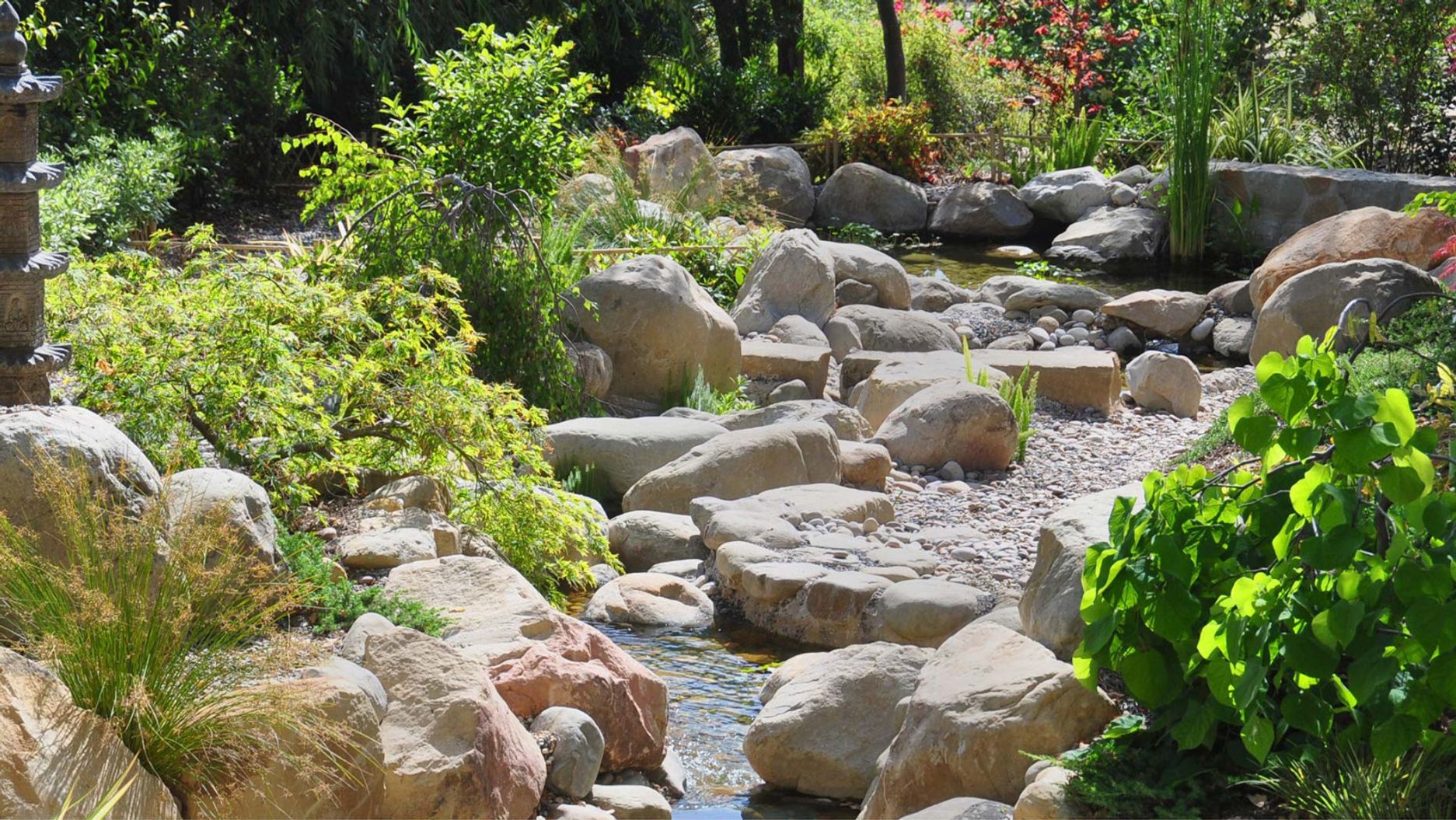Preparing for the Rain: Your Guide to a 'Spongy', Resilient Garden
Preparing for the Rain: Your Guide to a 'Spongy', Resilient Garden
When life gives us an abundance of rain, how do we respond? It's all about creating a more resilient garden that can absorb water and minimise the impact of heavy downpours. With the recent wet weather, many homeowners are thinking about how to make their properties more 'spongy'.
In this article, we'll answer the questions we'll answer your questions about rain gardens, permeable landscaping methods and the best materials to use.
What is a rain garden?
A rain garden is a low-lying, natural area in your landscape designed to collect and absorb rainwater from impervious areas like roofs, driveways, and patios. Rain gardens are not only beautiful additions to your property, but they also help prevent water pollution and control stormwater runoff.
While installing a rain garden is one solution to improving your property's water resilience, there are simpler, more affordable ways to achieve this. Auckland Council have put together a comprehensive guide to creating your own rain garden. Local landscaping company ScapeSpec has also compiled a thorough and easy-to-follow guide to rain gardens.
What is permeable landscaping?
Permeable landscaping, or rainwater landscaping, incorporates materials and practices that allow water to permeate the soil, rather than causing runoff. This not only aids in water conservation but also helps prevent flooding and erosion. Elements like porous paving, mulching, and water-loving plants are all part of permeable landscaping.
What are the best landscaping methods to prevent flooding?
Preventing flooding involves directing water away from your property and allowing it to soak into the ground naturally. Here are some easy methods you can try:
- Mulching: Mulch is a great way to improve drainage in your garden. It helps to keep the soil moist and prevents water from evaporating too quickly. Mulch also helps to suppress weeds and improve the overall appearance of your garden. When choosing mulch, select a type that is appropriate for your climate and the type of plants you are growing. Our customers favour materials like stone chip and pebble for a stylish look that doesn't need to be regularly replenished, as options like bark and straw do.
- Use permeable paving: Permeable paving allows water to flow through it, which can help to improve drainage in your garden. Permeable paving is available in a variety of materials, including natural stone, gravel, and concrete. When choosing permeable paving, select a type that is appropriate for your climate and the traffic level in your garden. For the right advice, you can chat with the experts at Stone & Water World.
- Land grading: Land grading can improve drainage in your garden by sloping the ground away from your house and other structures. This will help to prevent water from pooling and causing damage. When grading your land, consult with a professional to ensure that you are doing it correctly.
- Planting: Choosing the right plants for your garden can help to improve drainage. Water-loving plants, such as irises, water lilies, and rush can help to absorb excess water and prevent flooding. When choosing plants, be sure to select varieties that are appropriate for your climate and the amount of sunlight your garden receives.
- Create swales and rain gardens: Swales and rain gardens are designed to collect and filter rainwater. They can be a great way to reduce flooding in your yard and improve drainage in your garden. Swales are long, narrow depressions that are dug in the ground. Rain gardens are small, shallow depressions that are planted with water-loving plants. When creating swales and rain gardens, be sure to consult with a professional to ensure that you are doing it correctly.
- Drain installation: If you have a serious drainage problem, you may need to install a drain. A French drain is a trench that is filled with gravel or rock. The gravel or rock helps to filter the water and prevent it from seeping into your foundation. A trench drain is a trench that is lined with a perforated pipe. The pipe helps to carry the water away from your foundation. When installing a drain, be sure to consult with a professional to ensure that you are doing it correctly.
What can I put around my house to stop flooding?
In addition to the methods listed above, keeping your gutters and drains clear is an easy way to direct water away from your home. It's also important to seal any cracks in your home's foundation or walls to prevent water infiltration.
While we can't control the weather, we can certainly prepare for it. By creating a more 'spongy' garden, you can minimise the impact of heavy rainfalls and protect your property. With these cost-effective, easy methods, you can improve your garden's resilience this weekend.
Remember, adapting to our changing climate is an ongoing task, but every small change helps. Stay dry and happy gardening!
If you enjoyed this guide, you may also enjoy:


